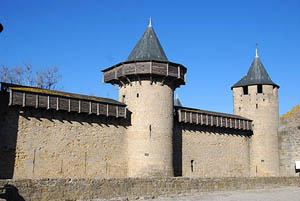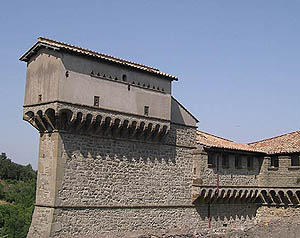Until the umber hulks show up.
That's true. But it's an issue for a castle too, since they can burrow up from below. Going under walls via
sapping is one of the standard tactics in a besieger's playbook.
They are also really easy to besiege. Just bury the entrence and wait.
There are also other problems like lack of sunlight, ventilation, etc.
It's only easy if there is just one entrance or if the besieger knows the location of every secondary entrance--and the defender would make every effort to hide these. It could also be pretty difficult to surround a city with entrances on two sides of a major terrain feature, i.e. the stereotypical dwarf city under a mountain. If the defenders
sallied on one side to attack the besiegers, the besiegers on the other side wouldn't be able to help (except in small numbers via teleportation).
You're right that ventilation and light are issues (though light could pretty straightforwardly be resolved via continual flame) but if the defenders were able to solve them--and they would have to to have built an underground city in the first place--then the waiting game isn't much different from a conventional siege. The besiegers can only win it if they possess better supply than the defender, and if the defender can't expect to be relieved by allies.
It's also not that easy to bury an entrance which looks like this:
Yes, I was just reading about the fall of Eben Emael this morning. An underground fortification is really easy to seal off. Castles are good because they control territory. An underground castle is just a bunker.
Bunkers can also control territory. If Eben-Emael didn't control territory, the Nazi's wouldn't have attacked it.
The way that a castle controls territory is by being the administrative center of that territory and by being an
annoying threat to anyone living or operating nearby who doesn't control it. A castle doesn't fundamentally protect territory, even a village that is right next to it, except by sheltering the inhabitants. But if there are five guys with horses chilling in a hostile castle, you can expect to be attacked by them any time you don't have enough guys with you to scare them away. And if you are leading an army, it's a logistical nightmare to have hostile soldiers sitting in your rear area interfering with your supply lines.
A bunker can do the same thing (especially with a little help from magical surveillance, an owl familiar say).
--
I guess I don't really have an answer to ventilation issues. I don't have a sense of the engineering issues involved and am basically assuming them away in the same manner that giant megadungeons like undermountain and dwarf cities like moria assume them away. The whole enterprise of underground city building is basically sunk without proper ventilation... so that's a fair criticism.




